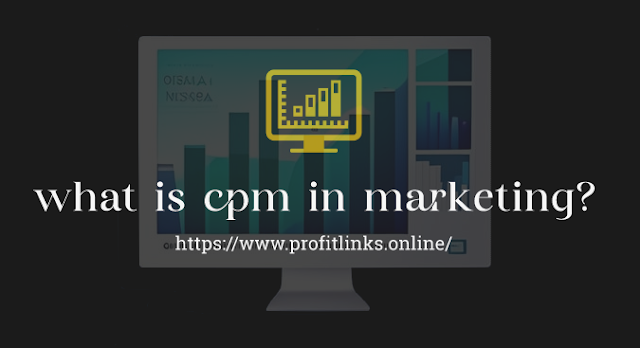CPM in marketing: Understanding the cost per thousand impressions
In the world of digital advertising, measuring the effectiveness of an advertising campaign is crucial for businesses looking to make the most of their advertising budget. One metric commonly used in this context is CPM, or cost per thousand impressions. In this blog post, we'll take a closer look at what CPM is, how it's calculated and what it means for marketers. in brief this is whats cpm in Marketing
What is CPM?
CPM stands for cost per thousand impressions. It is a metric that measures the cost of displaying an ad one thousand times. In other words, it is the cost of reaching one thousand people with an ad. CPM is primarily used to price display ads, such as banner ads, on websites and social media platforms.
How is CPM calculated?
The formula for calculating CPM is relatively simple. It is calculated by dividing the total cost of an advertising campaign by the number of impressions generated by that campaign and then multiplying the result by 1,000. The formula is as follows
CPM = (total cost / impressions) x 1,000
For example, if an advertiser paid $10,000 for a campaign that generated 500,000 impressions, the CPM would be calculated as follows
CPM = ($10,000 / 500,000) x 1,000
CPM = $20
This means that the advertiser paid $20 for every thousand times their ad was displayed.
Why is CPM important?
CPM is an important metric because it helps advertisers and marketers compare the relative costs of different advertising channels and campaigns. For example, if an advertiser is considering two different websites on which to place a banner ad, they can compare the CPM of each site to determine which one offers the best value for money. Similarly, if a marketer is comparing the effectiveness of two different ad campaigns, they can use CPM to determine which is more cost effective.
CPM can also be used to estimate the total cost of a campaign based on the number of impressions expected to be generated.For example, if a marketer knows that they need to generate one million impressions in order to achieve their desired results, they can use the CPM to estimate the total cost of the campaign.
Limitations of CPM ?
While CPM is a useful metric for comparing the cost of different advertising channels and campaigns, it is important to remember that it is not the only metric that should be considered. For example, CPM does not take into account the quality of the impressions generated by an ad campaign. An ad that generates a lot of impressions but doesn't lead to any conversions is not necessarily a good investment.
In addition, CPM does not take into account other factors that can affect the success of an ad campaign, such as the quality of the ad creative, the targeting of the campaign, and the effectiveness of the landing page. Therefore, while CPM is a useful metric, it should be used in conjunction with other metrics to get a more complete picture of the effectiveness of an ad campaign.
Conclusion :
CPM is a key metric in the world of digital advertising. It measures the cost of displaying an ad one thousand times and is used primarily to price display ads on websites and social media platforms. While CPM is a useful metric for comparing the cost of different advertising channels and campaigns, it is important to remember that it is not the only metric that should be considered. Advertisers and marketers should also consider other metrics, such as click-through rate, conversion rate, and return on investment, to get a more complete picture of the effectiveness of their ad campaigns.

